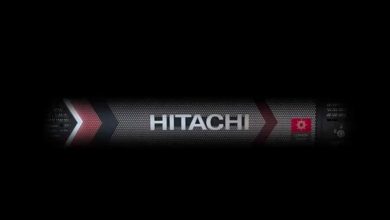DCAP Is a Must: Why Your Business Needs It and How to Choose One
Data Is Valuable, So It Makes Sense to Protect It Vigilantly

For the last 10–15 years, we have been experiencing a gradual shift from infrastructure-centric security models to data-centric ones. Solutions that focus on the security of data itself, regardless of where it is stored or processed, have become in demand. This has resulted in a growing need for data-centric audit and protection (DCAP) systems capable of operating consistently across different data silos.
Modern DCAP systems deal with a set of essential tasks. The average DCAP first searches for and audits data stored on local computers, mail servers, cloud storage, corporate networks, and more. Secondly, it analyses data, distinguishing its types from the entire stream. This helps to select an appropriate protection method. Finally, DCAP ensures data protection by distributing access rights to particular information.
As for a high-class system, it must be capable of automatically analysing all the files within the corporate network and classifying them based on their content (personal data, financial information, etc.) and contextual characteristics (file properties). An advanced DCAP solution should also offer preset data classification policies and provide options to create custom ones. This speeds up the search, audit, and analysis of all company data while meeting specific needs.
With this elaborate classification, the system tags the data. This enables access restrictions based on sensitive content types rather than just specific files or folders. If a particular file’s content is tagged as confidential, DCAP prevents unauthorized access or modification, regardless of location or extension. Thus, an advanced DCAP solution provides complete visibility and robust protection for the company’s data landscape.
Why Your Business Might Need DCAP
Often, employees, either intentionally or not, cause insider incidents. The consequences of such cases can result in data leaks, financial and reputational losses, fines from regulators, and more.
According to SearchInform’s Infosec Incidents in SMEs 2023 report, all the companies surveyed experienced internal security incidents last year. 71% of these entities faced attempts to steal data. Gurucul’s recent study says that 74% of organisations are at least moderately vulnerable or worse to insider threats. It also shows that over half of companies experienced one insider attack in 2023. 8% have faced more than two cases. The figures seem impressive enough to start thinking about implementing a quality solution that could prevent data-related internal incidents. This is where DCAP comes into play.
Let us explore how exactly DCAP helps build efficient data protection within an organisation.
Imagine that there is a document containing sensitive data, such as a financial report. It is being stored in a confidential folder open only to accountants. In one scenario, an accountant, either knowingly or not, moves this critical document to a shared folder accessible to everyone. In another one, the accountant copies a portion of the document’s content, pastes it into a new file, and saves it in the public folder.
If, say, a marketing manager attempts to open either the confidential document in the shared folder or the new file containing a part of sensitive data, DCAP will prevent access in both cases. Because the content of the file, whether in full or in part, includes data that marketing specialists are not supposed to access. Moreover, a DCAP solution can also block copying or sending the file outside the corporate perimeter. This means that an accountant or anyone else who should not be doing this will not be able to move, send, or copy the file anywhere, either in whole or in part.
In short, by implementing DCAP, you take your first step towards preventing situations where critical and valuable information might be exposed. Without a DCAP system, the likelihood of a data breach increases significantly. This can lead to potential reputational damage, financial loss, lawsuits, and even bankruptcy.
What to Consider When Choosing DCAP
A proper DCAP must work across multiple architectures and levels. It cannot just scan network folders, integrate with other components via API, or operate only at the workstation level. All these components must be represented within a quality DCAP system. Otherwise, there is going to be a huge number of tasks piling up. There will definitely be some information that is stored somewhere and should be categorized and protected, but that you do not even know about.
Additionally, an advanced and efficient DCAP should come with an agent. An agent is a program that is installed on users’ workstations and is meant to protect them. Some of providers do not develop agents, arguing that the installation of them on certain critical machines can become problematic for IT administrators.
An agent certainly creates a burden and affects the performance of the user’s computer. However, if you need DCAP to function not only as an audit tool but also as a means of protection, you have to use it. Only a solution with an agent ensures control of operations at the driver level. This is, in turn, required to provide comprehensive content-based blocking, which is the most effective way of restricting access.
Network-level methods, such as changing folder properties under specific accounts or changing access to a file in NTFS, unlike driver-level ones, have their limitations. First, they distribute access according to anything but content, which makes the restrictions vulnerable. Secondly, users can cancel these types of restrictions in the blink of an eye.
Almost all the essential functions needed to perform blocking impeccably are carried out thanks to agents. This is why integration-level or network-level methods of operation must only complement an agent.
Besides, pay attention to whether the DCAP system is capable of integrating with other solutions like data loss prevention (DLP) systems. While DCAP ensures the safety of data at rest, DLP is mostly responsible for the security of data in transit. Often, these solutions are used together to form a reliable shield against the widest range of data-related insider threats.
Last but not least, review the vendor’s history and take into account customer and colleague feedback to ensure you select the most reliable option.
A Final Word
As the amount of data companies handle does not decrease, DCAP becomes a critical security tool. Implementing it significantly reduces the risk of data breaches. Thus, DCAP systems help companies maintain their reputation and avoid financial losses.
However, choosing the right solution is not that easy due to the vast number of options available in today’s IT market. To make the right choice, keep our tips in mind and stay secure.




